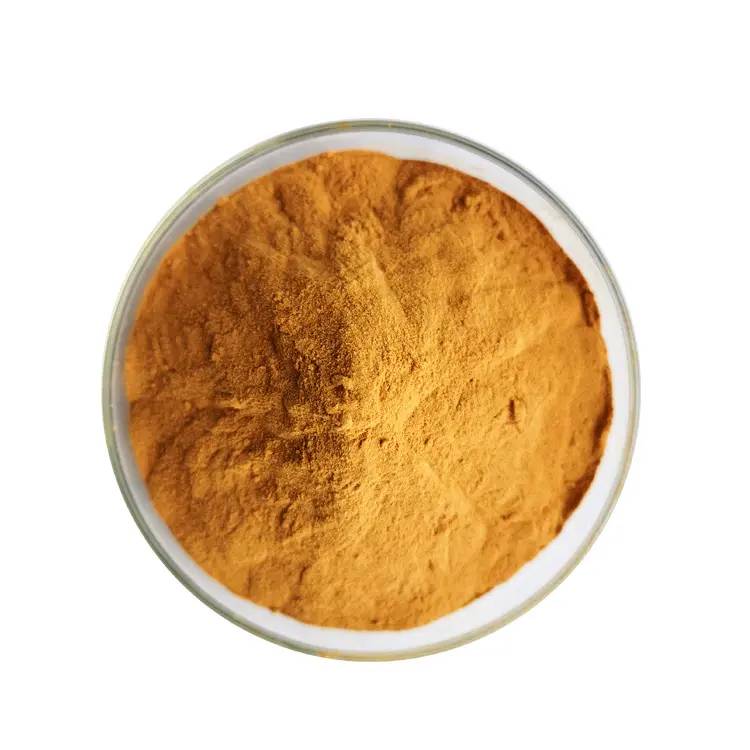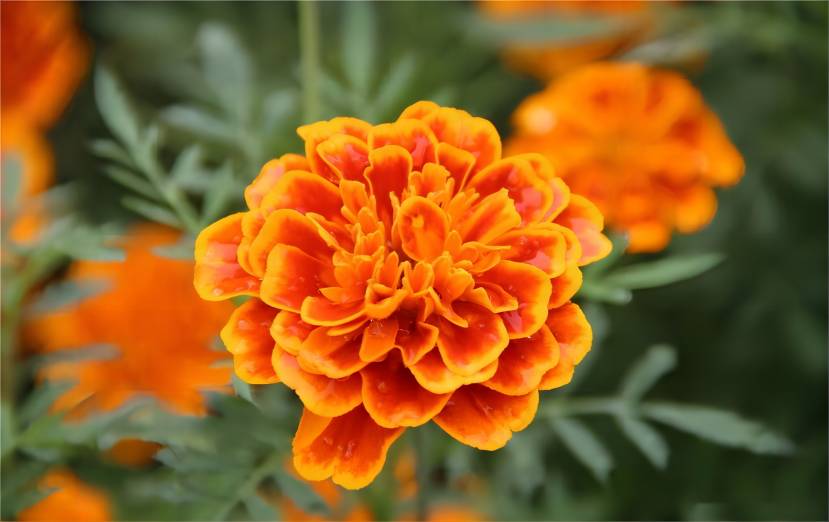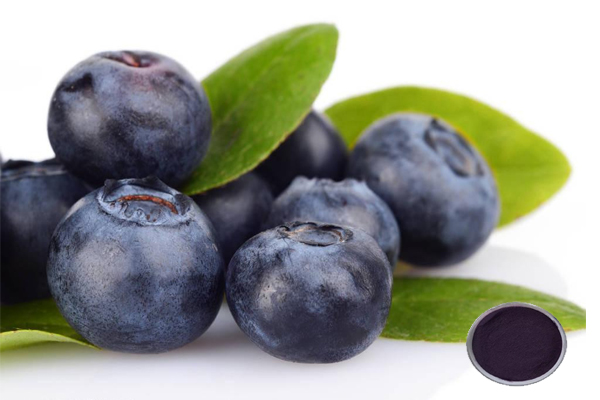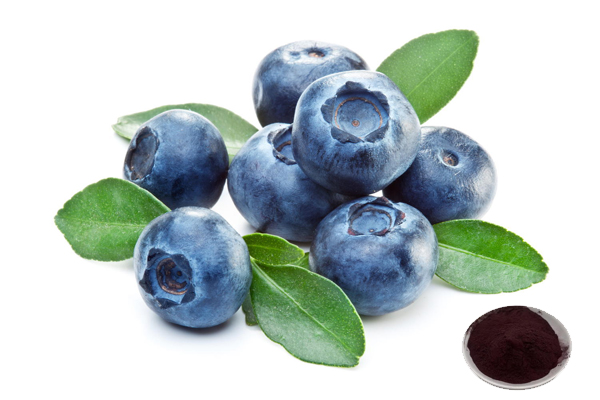Zeaxanthin Powder Bulk
Product Name:Zeaxanthin Powder Bulk
Assay:≥70%
Testing Method:HPLC
Appearance:Orange Fine Powder
Pesticide Residue:Comply with (EC) No 396/2005 Standard
- Description
- Data Sheet
- Certificate
-
What is Zeaxanthin Powder?
Zeaxanthin is a new oil-soluble natural pigment widely found in green leafy vegetables, flowers, fruits, goji berries, and yellow corn. In nature, it often co-exists with lutein, beta-carotene, and cryptoxanthin to form a mixture of carotenoids. The human body and animals cannot synthesize zeaxanthin on their own and must obtain it through food or supplements. In the human body, zeaxanthin is a strong antioxidant and also protects the organism's tissue cells through antioxidant behaviors such as bursting of mono-linear oxygen species and scavenging of free radicals, thus protecting the biological system from some of the potentially deleterious effects due to excessive oxidative reactions.
Green Spring Technology provides food-grade natural zeaxanthin powder, which is extracted from marigold flowers. It has good water solubility, is GMO-free, and meets EU standards for pesticide residues, solvent residues, and heavy metals. This zeaxanthin powder is traceable throughout the production process, from raw material to finished product. We can provide authoritative third-party quality inspection reports.
Specification:
Product Name
Zeaxanthin Powder Bulk
Latin Name
Tagetes Erecta L
CAS No.
144-68-3
Source
Marigold Flower
Active Ingredients
Zeaxanthin
Assay
Zeaxanthin:≥70.0%
Testing Method
HPLC
Appearance
Orange Fine Powder
Pesticide Residue
Comply with (EC) No 396/2005 Standard
Regulation:
It conforms to EU regulations.
Looking for a Quotation?Benefits:
Protecting Your Eyesight
Zeaxanthin and lutein are the only 2 remaining natural carotenoids in the retina and are essential carotenoids for the lens, with high aggregation specificity for ocular tissues. It concentrates zeaxanthin specifically in the macular speckles through high affinity binding proteins and specialized transport and metabolism proteins for light-induced oxidative stress via light absorption and localized efficient antioxidant properties to protect the macula from damage. They have a particularly important role in maintaining eye health and visual preservation.
Prevention of Cardiovascular Diseases
Carotenoids are fat-soluble substances that are usually found in higher animal cells in complexes with proteins and other lipid components, especially biofilms. They can improve the immune properties of biofilms and intercellular information transfer, and play a potential role in disease prevention. Zeaxanthin and lutein were found to significantly reduce the thickness of the middle layer of the intima-media vessels of the common carotid artery compared to other carotenoids. Zeaxanthin increases the antioxidant capacity of LDL and prevents cardiovascular diseases. Some studies have reported a lower risk of cardiovascular disease in people with a high daily intake of carotenoids. Researchers found that zeaxanthin can have an inhibitory effect on LDL oxidation under in vitro conditions. Zeaxanthin significantly reduces the incidence of myocardial infarction and helps slow down the process of atherosclerosis.
Cancer Prevention
Zeaxanthin, like many carotenoids, protects against cell and organ damage caused by free radicals in the body. Studies have shown that zeaxanthin inhibits auto-oxidation of cellular lipids and prevents cellular damage caused by oxidation. Zeaxanthin has the function of reducing the occurrence of cancer and enhancing immunity. Domestic and international studies have shown that zeaxanthin has an inhibitory effect on cancer, and its mechanism may be related to the regulation of the level of oxidative stress, inhibition of ATP generation, and up-regulation of p53 mRNA expression.
Cataract Prevention
Zeaxanthin is one of only two carotenoids found in the lens. It has 11 conjugated double bonds in the molecule and a hydroxyl group on the tail group, a structure that gives it strong antioxidant capacity. As a strong antioxidant, it can quench the triplet state of single-linear oxygen and photosensitizer and scavenge damaging oxygen radicals. It prevents membrane lipid peroxidation and reduces the formation of lipofuscin, which in turn prevents cataract formation. Studies have shown that people with a high intake of lutein and zeaxanthin are 19% to 22% less likely to develop cataracts than those with a low intake.
Zeaxanthin specifically absorbs blue light, which is the most damaging light to the retina, thus protecting the cone cells in the central retinal recess. Many studies have shown that a short-term increase in zeaxanthin intake can increase macular pigment, thus enhancing the ability of the macula to fight against damage by harmful substances and light rays, and preventing and slowing down age-related macular degeneration.
Applications:
In the Food Field:
Zeaxanthin has a strong colouring ability due to its inability to be converted into vitamin A after absorption in the body and its ability to be deposited in the body. It can be used to improve the colour of egg yolks and the meat colour of fish, shrimp and other poultry, enhancing food quality and nutritional value. Its toxicological evaluation in the clinic and animal tests have confirmed its safety for consumption, and it is a food colouring approved by the European Union. Compared with chemically synthesized commercial colourants, zeaxanthin powder is natural, nutritious, safe and non-toxic, and the production cost is low.
For Health Products:
At present, the US FDA has approved zeaxanthin as a new type of nutritional additive, which can be applied to food. Zeaxanthin can not be synthesized in the body, entirely from dietary intake, zeaxanthin powder is a functional food development and uses a significant upward trend.
-
Download
Zeaxanthin Powder Bulk COA


 English
English French
French Spanish
Spanish Russian
Russian Korean
Korean Japanese
Japanese










